Microfluidics
for Biological Applications
�
Wei-Cheng Tian · Erin Finehout
Editors
Microfluidics
for Biological Applications
1 3
�
Editors
Wei-Cheng Tian
General Electric
Global Research Center
1 Research Circle
Niskayuna, NY 12309
Erin Finehout
General Electric
Global Research
1 Research Circle
Niskayuna, NY 12309
ISBN: 978-0-387-09479-3
e-ISBN: 978-0-387-09480-9
Library of Congress Control Number: 2008930844
2008 Springer Science+Business Media, LLC
All rights reserved. This work may not be translated or copied in whole or in part without the written
permission of the publisher (Springer Science+Business Media, LLC, 233 Spring Street, New York,
NY 10013, USA), except for brief excerpts in connection with reviews or scholarly analysis. Use in
connection with any form of information storage and retrieval, electronic adaptation, computer
software, or by similar or dissimilar methodology now known or hereafter developed is forbidden.
The use in this publication of trade names, trademarks, service marks, and similar terms, even if
they are not identified as such, is not to be taken as an expression of opinion as to whether or not
they are subject to proprietary rights.
Printed on acid-free paper
springer.com
�
To my family
Erin Finehout
To Gan-Wu, Yu-Hsien, Wei-Hua, Kaitlyn, Darren, and Jennifer
Wei-Cheng Tian
�
Preface
In Nobel Prize winner Richard Feynman’s well-known 1959 speech
“There’s Plenty of Room at the Bottom” [1] he marvels that although
many biological systems, such as cells, are very small, they are active and
perform a number of functions. He then poses the challenge “Consider the
possibility that we too can make a thing very small which does what we
want – that we can manufacture an object that maneuvers at that level!” [1]
In this book we hope to show readers that we are getting closer to meeting
this challenge. We have tools to manipulate and analyze small volumes of
biomolecules (such as DNA and protein); we can manipulate and analyze
individual cells; and we can create nanodrops, the size of a cell, to perform
specific chemical reactions. All of these have been made possible by the
application of microfluidics.
This book consists of a selection of review articles that are intended to
show how microfluidics is applied to solve biological problems; why mi-
crofluidics continues to play an important role in this field; and what needs
to be done next. We will introduce not only the various technologies of
microfluidics but also how to link these technologies to different biological
applications at the industrial and academic level. Chapters 1-3
give perspective on the history and development of microfluidic technolo-
gies. They also serve to give a physical understanding of microfluidic de-
vices. Chapter 1 covers the physics and fluid dynamics of microscale
flows. Chapter 2 summarizes the materials and methods used to fabricate
microfluidic devices in biological applications. Chapter 3 gives solutions
to how these microscale devices can be interfaced with the macro scale
world. Chapters 4-66 give overviews on how microfluidic systems
have been used to study and manipulate specific classes of components.
Microfluidic devices
samples (Chapter 4); separate and analyze protein mixtures (Chapter 5);
and culture, separate, and analyze cells (Chapter 6). Chapters 7-10 focus on
specific biological applications of microfluidics: tissue engineering (Chap-
ter 7), high throughput screening (Chapter 8), diagnostics (Chapter 9), and
biodefense (Chapter 10). And finally, Chapter 11 discusses
have been used to: prepare, amplify, and analyze DNA
6
�
viii
emerging trends in the microfluidics field and the current challenges to the
growth and continuing success of the field.
In all the chapters, the authors give information on the biological problems
that need to be solved, the current research that is being done to address
them, and the obstacles that still remain. In addition, there are summaries
of the types of products that have been commercialized in each area. This
book is intended to be used at the senior undergraduate or graduate level
for students. It will also be a great resource for researchers and scientists in
the biotechnology, pharmaceutical, and life science industries. We hope to
provide the readers with an overview of microfluidics and its current ap-
plications to encourage readers to think about how these technologies
could help them in their own fields.
Reading through the chapters there are a few recurring themes that merit
being mentioned here. The first is that the application of microfluidics isn’t
just about saving time, cutting costs, and needing less reagents. Working in
the microfluidic regime enables scientists to perform experiments and use
techniques that simply aren’t possible at a larger scale. The second theme
is that for the microfluidics field as a whole to continue to move forward in
the biological area, it is vital that scientists from different fields (engineers,
chemists, material scientists, biologist, etc.) work together. Only with such
collaborations can one be sure that the right questions are being addressed,
the right methods are being applied, and the optimal tools are being used.
The editors would like to thank Steven Elliot and Angela DePina at
Springer for their help in pulling this book together. We would also like to
show our appreciation to the authors for all of the time and effort they put
towards writing their chapters. Lastly, we’d like to thank our friends and
family for their support and patience during this project.
References:
1. Feynman RP (1960) There’s plenty of room at the bottom: An invitation to en-
ter a new field of physics. Engineering and Science 23:22-36.
�
Contents
Chapter 1 Introduction to Microfluidics ................................................ 1
Abstract...................................................................................................1
1 Introduction to Microfluidics...............................................................2
1.2 History of Microfluidics ...................................................................3
1.2.1 The beginning: Gas chromatography and capillary
electrophoresis....................................................................................3
1.2.2 The microfluidic advantage....................................................... 5
1.2.3 Modular separation, reaction and hybridization systems ..........7
1.2.4 Integrated systems .....................................................................8
1.3 Fluidics and Transport Fundamentals.............................................10
1.3.1 The continuum approximation.................................................10
1.3.2 Laminar flow ...........................................................................10
1.3.3 Diffusion in microfluidic systems ...........................................12
1.3.4 Surface forces and droplets......................................................14
1.3.5 Pumps and valves ....................................................................16
1.3.6 Electrokinetics .........................................................................16
1.3.7 Thermal management ..............................................................18
1.4 Device Fabrication..........................................................................18
�
x
1.4.1 Materials..................................................................................19
1.4.2 Fabrication and assembly ........................................................20
1.5 Biological Applications ..................................................................21
1.5.1 Genetic analysis (DNA/RNA) .................................................22
1.5.2 Proteomics ...............................................................................22
1.5.3 Cellular assays .........................................................................23
1.5.4 Drug delivery and compatibility..............................................24
1.6 The Future.......................................................................................26
1.6.1 Potential demand/market for microfluidic devices..................26
1.6.2 Current products ......................................................................27
1.6.3 Challenges and the future ........................................................28
References ............................................................................................29
Chapter 2 Materials and Microfabrication Processes for Microfluidic
Devices ...................................................................................................... 35
Abstract.................................................................................................35
2.1 Introduction ....................................................................................36
2.2 Silicon Based Materials ..................................................................37
2.2.1 Micromachining of silicon.......................................................39
2.2.2 Bulk micromachining ..............................................................39
2.2.3 Surface micromachining..........................................................46
2.3 Glass Based Materials.....................................................................49
2.3.1 Microfabrication in glass......................................................... 51
2.4 Wafer Bonding ............................................................................... 56
2.4.1 Fusion bonding ........................................................................ 57
2.4.2 Anodic bonding ....................................................................... 57
2.4.3 Adhesive bonding.................................................................... 58
2.5 Polymers ......................................................................................... 59
2.5.1 Microfabrication ...................................................................... 59
2.5.2 Polymer materials:...................................................................64
2.6 Conclusion......................................................................................82
References ............................................................................................82
Chapter 3 Interfacing Microfluidic Devices with the Macro World.. 93
Abstract.................................................................................................93
3.1 Introduction ....................................................................................94
3.2 Typical Requirements for Microfluidic Interfaces .........................94
3.3 Review of Microfluidic Interfaces..................................................95
3.3.1 World-to-chip interfaces..........................................................95
3.3.2 Chip-to-world interfaces........................................................103
3.4. Future Perspectives......................................................................112
References ..........................................................................................113
�

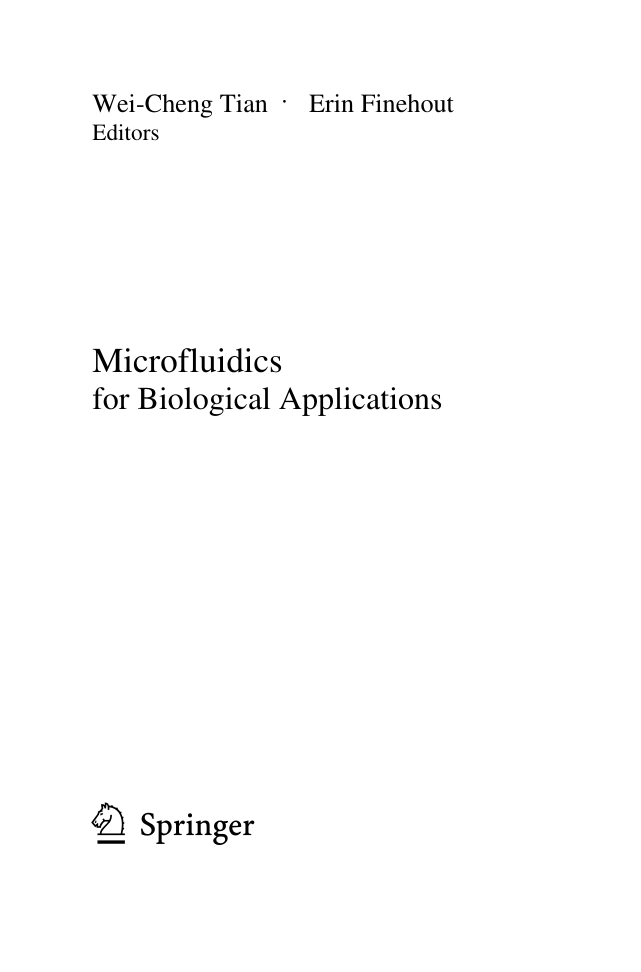
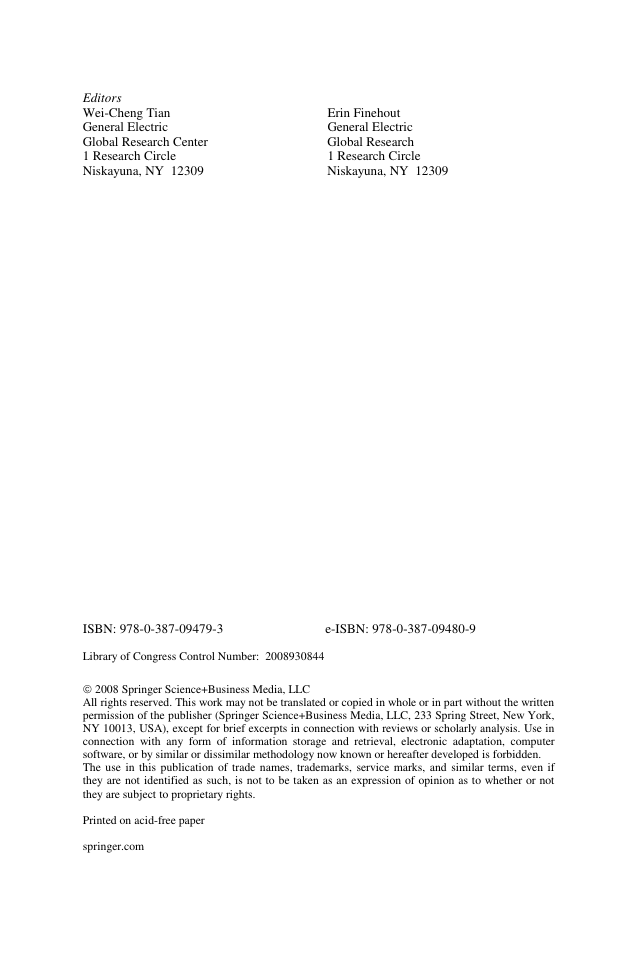

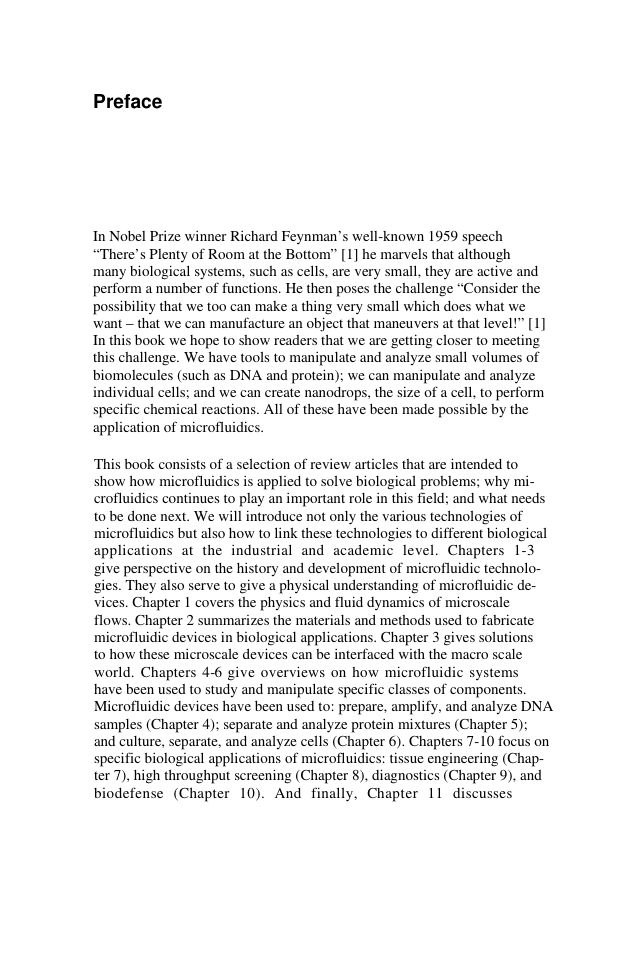
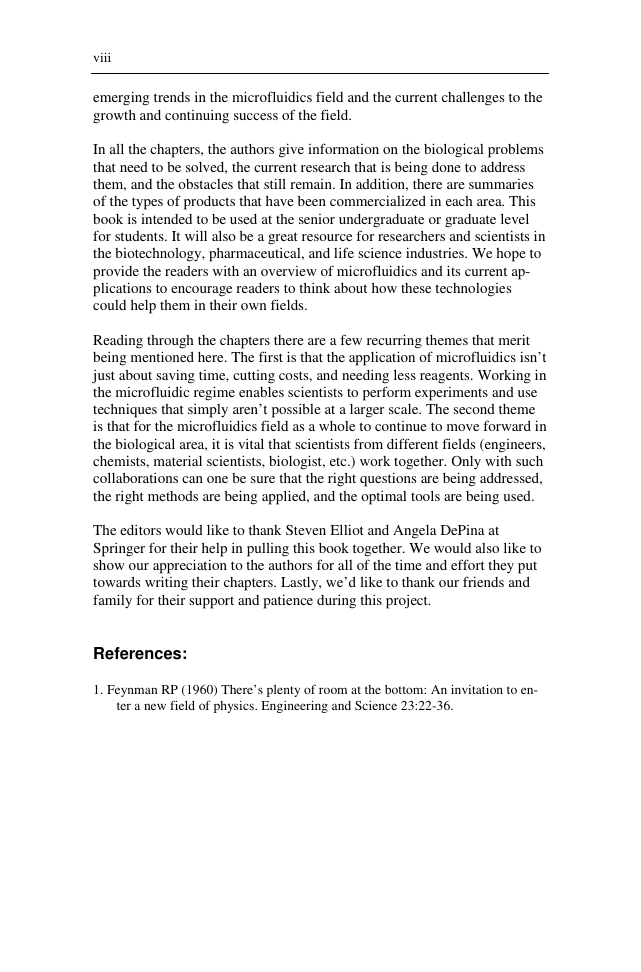
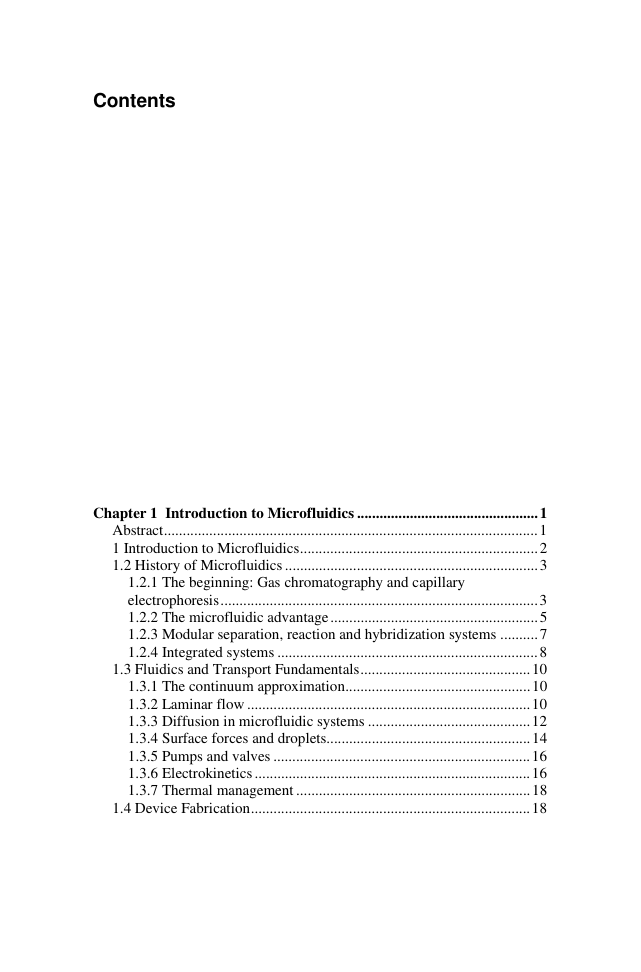
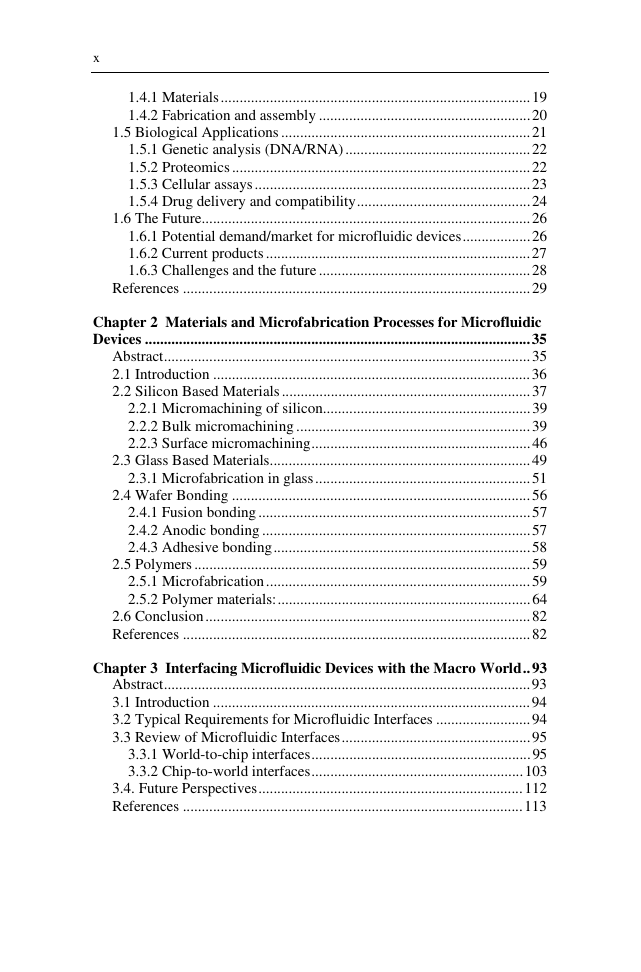








 2023年江西萍乡中考道德与法治真题及答案.doc
2023年江西萍乡中考道德与法治真题及答案.doc 2012年重庆南川中考生物真题及答案.doc
2012年重庆南川中考生物真题及答案.doc 2013年江西师范大学地理学综合及文艺理论基础考研真题.doc
2013年江西师范大学地理学综合及文艺理论基础考研真题.doc 2020年四川甘孜小升初语文真题及答案I卷.doc
2020年四川甘孜小升初语文真题及答案I卷.doc 2020年注册岩土工程师专业基础考试真题及答案.doc
2020年注册岩土工程师专业基础考试真题及答案.doc 2023-2024学年福建省厦门市九年级上学期数学月考试题及答案.doc
2023-2024学年福建省厦门市九年级上学期数学月考试题及答案.doc 2021-2022学年辽宁省沈阳市大东区九年级上学期语文期末试题及答案.doc
2021-2022学年辽宁省沈阳市大东区九年级上学期语文期末试题及答案.doc 2022-2023学年北京东城区初三第一学期物理期末试卷及答案.doc
2022-2023学年北京东城区初三第一学期物理期末试卷及答案.doc 2018上半年江西教师资格初中地理学科知识与教学能力真题及答案.doc
2018上半年江西教师资格初中地理学科知识与教学能力真题及答案.doc 2012年河北国家公务员申论考试真题及答案-省级.doc
2012年河北国家公务员申论考试真题及答案-省级.doc 2020-2021学年江苏省扬州市江都区邵樊片九年级上学期数学第一次质量检测试题及答案.doc
2020-2021学年江苏省扬州市江都区邵樊片九年级上学期数学第一次质量检测试题及答案.doc 2022下半年黑龙江教师资格证中学综合素质真题及答案.doc
2022下半年黑龙江教师资格证中学综合素质真题及答案.doc